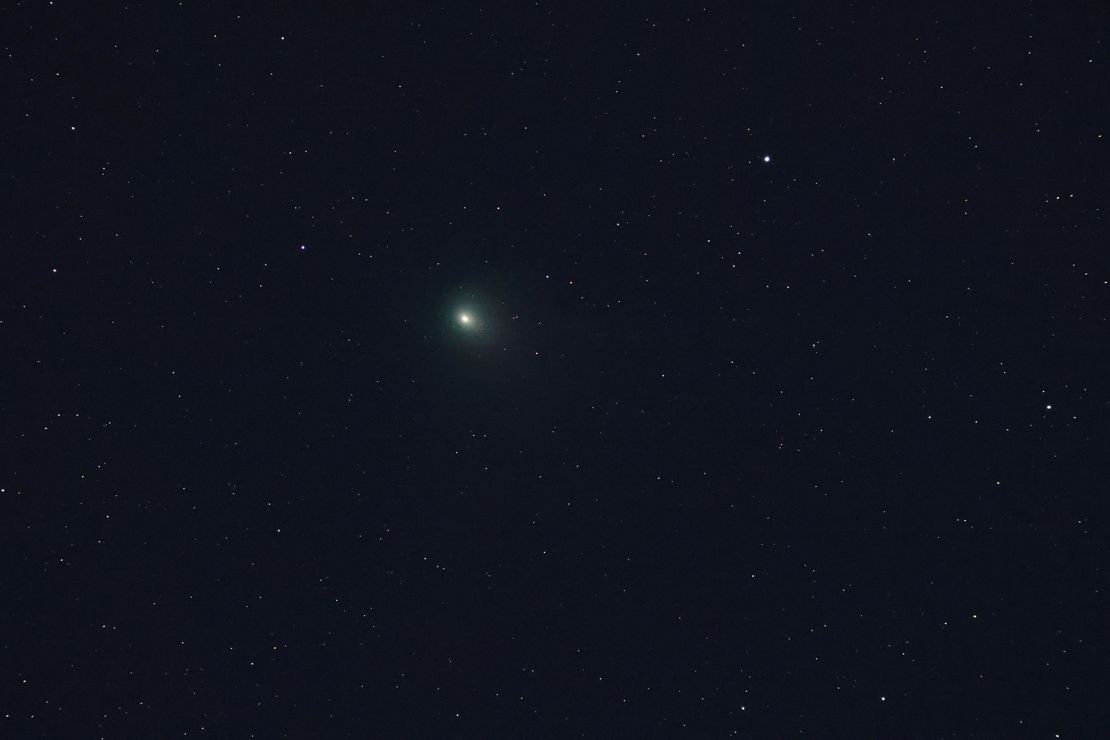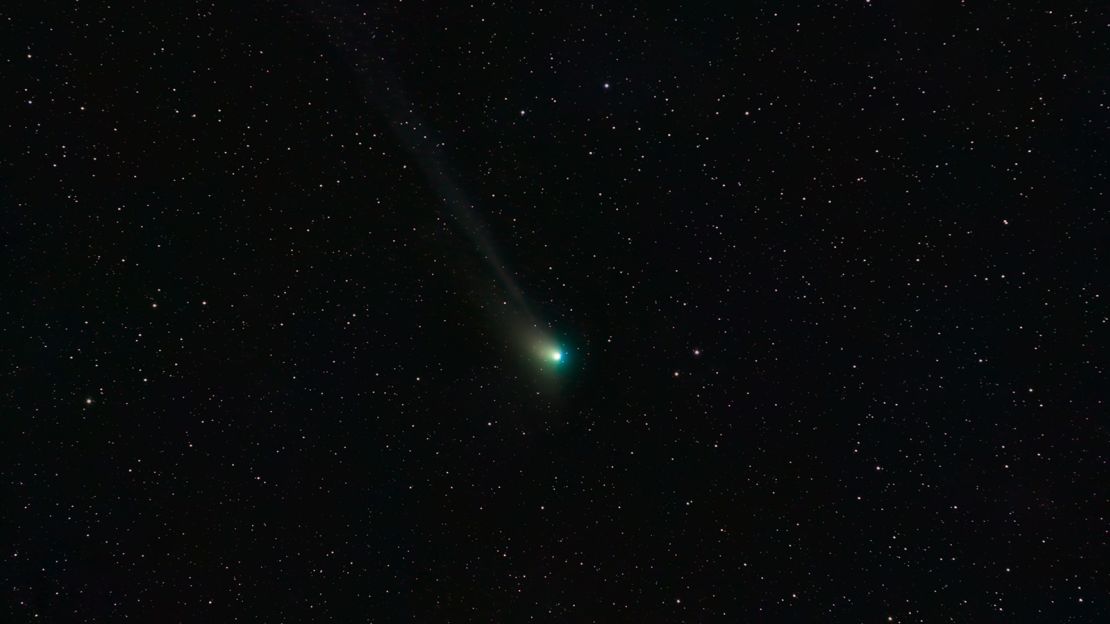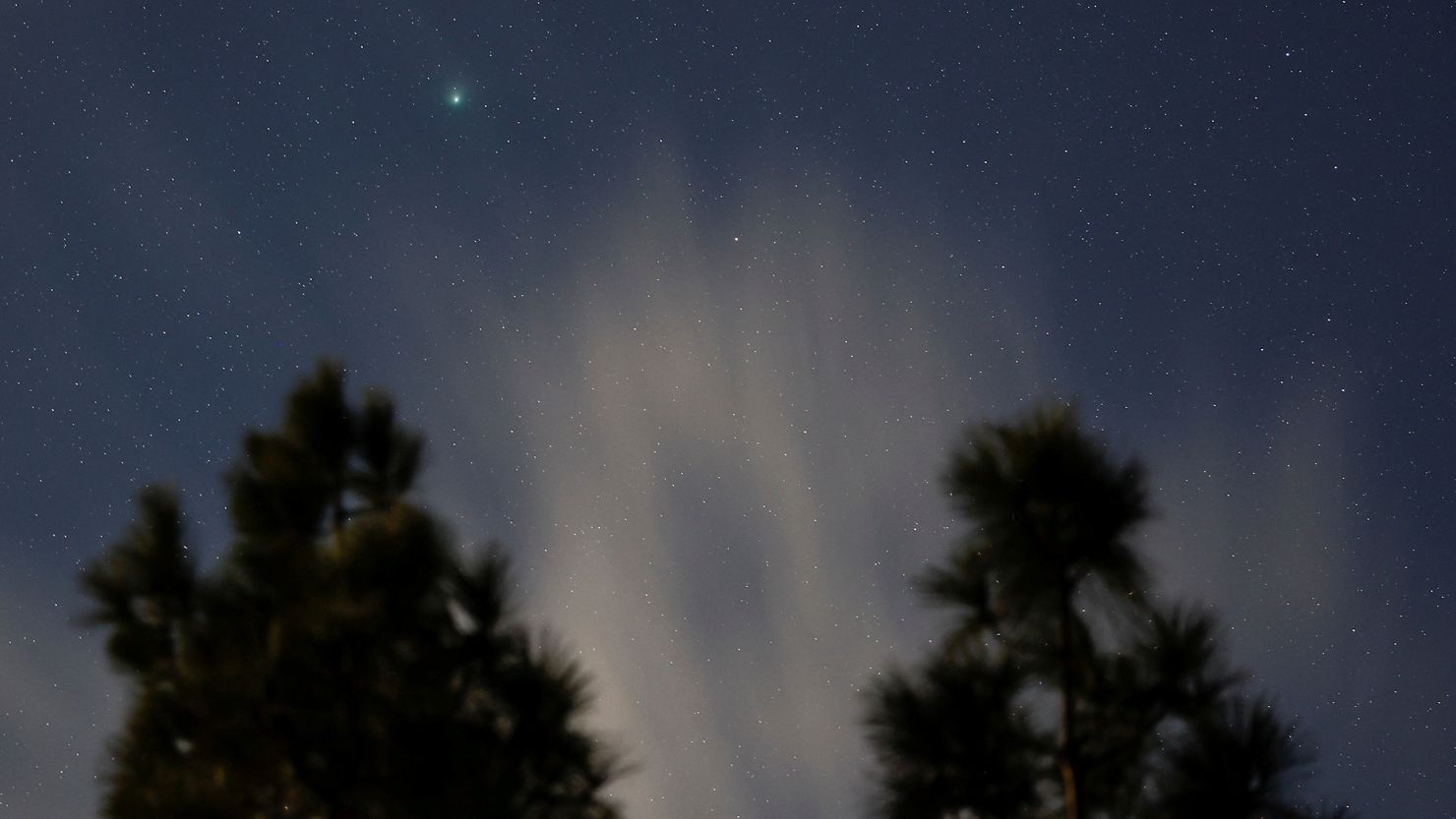Sign up for CNN’s Wonder Theory science newsletter. Explore the universe with news on fascinating discoveries, scientific advancements and more.
A green-hued comet has made its closest approach to Earth, wowing night sky watchers in the Northern Hemisphere who caught a glimpse of the icy celestial object as it passed through our cosmic neighborhood.
Discovered in March by astronomers using the Zwicky Transient Facility’s wide-field survey camera at the Palomar Observatory in San Diego County, California, it was last visible in the night sky during the Stone Age — about 50,000 years ago.
Named C/2022 E3 (ZTF), the comet has an orbit around the sun that passes through the outer reaches of the solar system, which is why it’s taken such a long route — and long time — to swing by Earth again, according to The Planetary Society.

At its closest, the comet was expected to be 26 million miles to 27 million miles (about 42 million kilometers to 44 million kilometers) away, according to EarthSky. Even during its closest approach, the comet was still more than 100 times the moon’s distance away from Earth, according to EarthSky.
Astronomer Dr. Gianluca Masi at the Bellatrix Astronomical Observatory in Italy watched the comet make its closest approach at 17:56 UTC or 12:56 p.m. ET Wednesday. The comet came within 26.4 million miles (42.5 million kilometers) of Earth.
As the comet neared Earth, observers were able to spot it as a faint green smudge near the bright star Polaris, also called the North Star. Comets reflect different colors of light due to their current positions in orbit and chemical compositions.
A comet can be distinguished from stars by its streaking tails of dust and energized particles as well as the glowing green coma surrounding it.
The coma is an envelope that forms around a comet as it passes close to the sun, causing its ice to sublimate, or turn directly to gas. This causes the comet to look fuzzy when observed through telescopes.
Imran Sultan, an astrophysics graduate student at the Center for Interdisciplinary Exploration and Research in Astrophysics at Northwestern University, has been observing the comet since January 19, about a week after the cosmic object’s closest approach to the sun. Sultan used remote observatories in the US and Europe as well as those at Northwestern.
In his images, Sultan was able to capture the comet’s anti-tail, or material opposite the tail of the comet. Watching the comet zip through the inner solar system has created an ever-changing backdrop of the universe, where distant galaxies gleam in the background, Sultan said.
“The juxtaposition of our friendly visitor and galaxies hundreds of millions of light-years away really conveys how enormous our universe is,” Sultan said.
“This comet started its journey in the most distant parts of our Solar System and may even leave the Solar System entirely after this visit, so capturing this historic event has been extraordinary,” he said via email. “As amateur astronomers, we are drawn to the beauty of the universe, and rare transient events like comets, solar and lunar eclipses, conjunctions, and lunar occultations accentuate the beauty, and give us the opportunity to capture once-in-a-lifetime photos.”

Sultan plans to continue capturing images of the comet over the next month.
After passing by Earth, the comet will make its closest approach of Mars on February 10, according to EarthSky.
Masi’s Virtual Telescope Project is sharing a live stream of the comet in the skies above Rome. And don’t miss seeing other celestial events in 2023.









